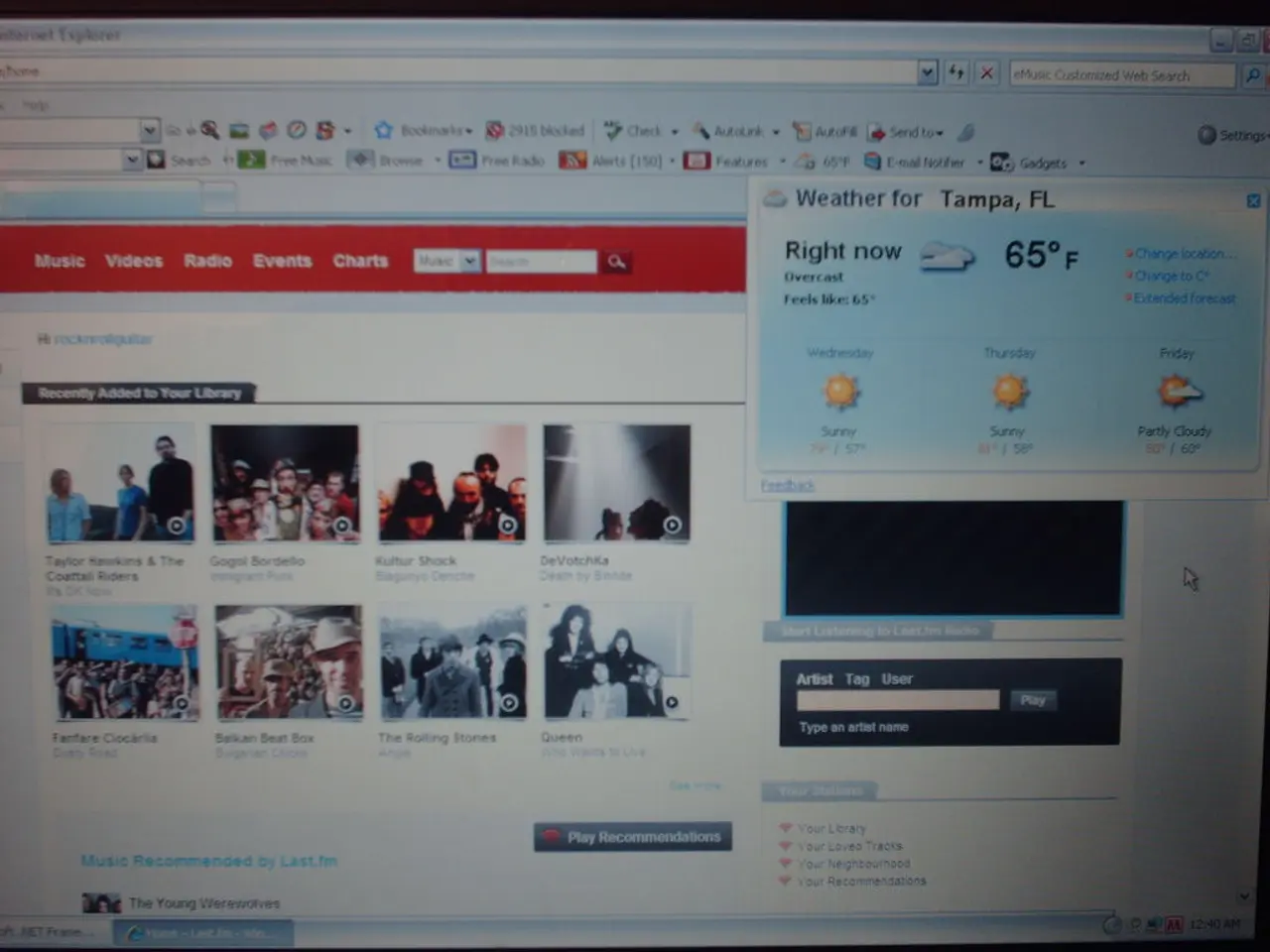Guide to Creating an Efficient e-Learning Site: Key Elements for Optimal Performance
In the ever-evolving landscape of e-learning, creating a successful online education platform requires incorporating the latest trends and features. Here are the must-have elements that will help you build a high-performing e-learning website.
Real-Time Communication Tools
To foster community and engagement among learners, implement live video classes, chat boxes, discussion forums, and instructor Q&A boards. These tools will help transform your platform into a vibrant learning space, encouraging peer-to-peer learning and interaction.
Mobile-First Design
With over 60% of learners using mobile devices, a mobile-first design is essential. Prioritise clean navigation, thumb-friendly buttons, fast load times, and consider developing a native mobile app for offline access.
Built-In Gamification
Motivate learners and boost retention by adding gamified features such as badges, points, leaderboards, and unlockable content. These elements will create a more engaging learning experience, encouraging users to progress through courses.
Comprehensive Analytics for Instructors
A great analytics dashboard should provide insights like course completion rates, quiz scores, drop-off points, engagement metrics, and predictive behavior tracking. These insights will help instructors to improve their courses and tailor content to meet the needs of their learners.
High-Quality Video Hosting and Adaptive Streaming
Deliver seamless video content optimised for various internet speeds and devices, including security measures like Digital Rights Management. High-quality video playback will enhance the user experience and ensure that learners can access your content smoothly.
Social and Collaborative Learning Features
Encourage active learning and instant knowledge sharing by integrating peer feedback, social Q&A, and video creation tools. These features will foster a sense of community and collaboration among learners.
SCORM Compliance
Ensure easy integration with third-party courses and industry standard LMS compatibility by making your platform SCORM compliant. This will allow you to offer a wider range of courses to your learners.
Immersive 3D Elements and Virtual Experiences
Create engaging, interactive content and environments by incorporating immersive 3D elements and virtual experiences. Technologies like WebGL and Three.js can help you achieve this, enhancing the user experience and engagement.
These features align with the major trends driving e-learning effectiveness: interactivity, personalization, mobile accessibility, data-driven optimization, and engaging multimedia content. Also important are ease of integration with other systems and security. Incorporating these will be critical to achieve high learner retention, satisfaction, and learning outcomes in the upcoming years.
Other Essential Features
- Live Classes via Zoom or native video: Offer live classes to create a more interactive learning experience.
- Progress tracking and certificates: Include visual indicators like checkmarks, progress bars, or course completion percentages to motivate learners.
- Custom learning paths: Allow users to select their learning track, skip what they already know, and test out of early lessons.
- SEO and Marketing Features: Include blog functionality, SEO-optimized course pages, custom meta titles and descriptions, schema markup for search engines, integration with email tools and social media, and use of landing pages to promote specific courses or campaigns.
User Experience (UX)
A good UX includes intuitive navigation, clear menus, logical layout, consistent fonts and colour schemes, and mobile accessibility. A well-designed UX will help users to navigate your platform easily and enjoy a seamless learning experience.
Interactive Assessments
Interactive assessments should include multiple formats like multiple choice, drag and drop, fill in the blanks, peer-reviewed answers, timed assessments, instant feedback, and explanations for both correct and incorrect answers. These features will help assess learner understanding effectively.
Accessibility
Accessibility is a major part of UX, with e-learning platforms required to support screen readers, include alt text for images, and offer keyboard navigation. Ensuring your platform is accessible will help you cater to a wider audience, including those with disabilities.
Tech Support and Scalability
Ensure your site has cloud hosting for high traffic, backups, DDoS protection, SSL certificates, fast customer support (live chat is ideal), and compatibility with new devices or software updates. These features will help your platform to scale effectively and handle high volumes of traffic.
Instructor Q&A Boards
Provide instructor Q&A boards to allow students to ask questions and receive answers in a structured format. These boards will help students to clarify their doubts and understand the course material better.
Payment Gateways and Monetization Options
Support flexible monetization like one-time course purchases, subscription models, bundled courses, free previews or trials, discount codes, or affiliate tracking, and integrate with trusted gateways like Stripe, PayPal, or Apple Pay. These features will help you to monetize your platform effectively.
Good quality video playback should support HD and adaptive streaming, subtitles or captions, playback speed controls, mobile compatibility, video analytics, and mid-video quizzes or prompts. These features will help you to deliver high-quality video content and assess learner understanding effectively.
The education process is now online, resulting in a boom in e-learning. By incorporating these features, you can create a high-performing education platform that meets the needs of modern learners and stays ahead of the curve in the ever-evolving e-learning landscape.
- To build a high-performing e-learning website, prioritize a mobile-first design with clean navigation, thumb-friendly buttons, fast load times, and native mobile app development for offline access.
- Implementing real-time communication tools like live video classes, chat boxes, discussion forums, and instructor Q&A boards will transform your platform into a vibrant learning space.
- Boost retention and create a more engaging learning experience by incorporating built-in gamification features like badges, points, leaderboards, and unlockable content.
- A good analytics dashboard should provide insights like course completion rates, quiz scores, drop-off points, engagement metrics, and predictive behavior tracking.
- High-quality video hosting and adaptive streaming ensure seamless video content optimized for various internet speeds and devices, including digital rights management.
- Social and collaborative learning features such as peer feedback, social Q&A, and video creation tools foster a sense of community and collaboration among learners.
- To achieve high learner retention, satisfaction, and learning outcomes, ensure SCORM compliance for easy integration with third-party courses and industry standard LMS compatibility.




